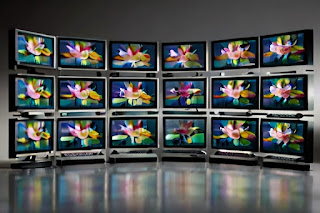TV display technologies come in various forms, each with their own unique characteristics. Here are some commonly found TV display versions:
Table of Contents

1. LED (Light Emitting Diode)
Backlit LED
Utilizes LED lights positioned behind the screen to illuminate the pixels. This technology is widely used and cost-effective.
Edge-lit LED
LEDs are placed along the edges of the screen, enabling a slimmer design. However, this may result in uneven lighting.
2. OLED (Organic Light Emitting Diode)
Utilizes organic compounds that emit light when an electric current is applied. OLED displays offer deep blacks, vibrant colors, and superior viewing angles compared to LED.
3. QLED (Quantum Dot LED)
Combines LED technology with a layer of quantum dots, enhancing color and brightness. QLED TVs are renowned for their vivid and accurate colors.
4. Plasma
An older technology that employs ionized gases to produce light. Plasma TVs have become less common due to advancements in LED and OLED technologies.
5. LCD (Liquid Crystal Display)
Traditional technology that uses liquid crystals to control light. Older LCD TVs use CCFL (Cold Cathode Fluorescent Lamp) backlighting, while newer models utilize LED backlighting.
6. MicroLED
A more recent technology that utilizes small LED modules to create the image. It offers similar benefits to OLED but is not as widely available.
7. Mini-LED
An advanced LED technology that incorporates smaller LEDs for improved local dimming, resulting in enhanced contrast and black levels compared to traditional LEDs.
8. HDR (High Dynamic Range)
While not a display technology itself, HDR enhances the contrast and color range of a display, providing a more realistic and dynamic image. Many modern TVs, regardless of the display technology, support HDR.
Factors to Consider Before Selecting TV Display Versions
When selecting a TV, it is important to consider factors such as picture quality, viewing angles, response time, and budget. The display technology is a crucial aspect, but other features like resolution (e.g., 4K, 8K), refresh rate, and smart TV capabilities also contribute to the overall viewing experience.
Read our post-Display Resolution Comparison: QHD vs. HD+ vs. Full HD – Which Reigns Supreme?




